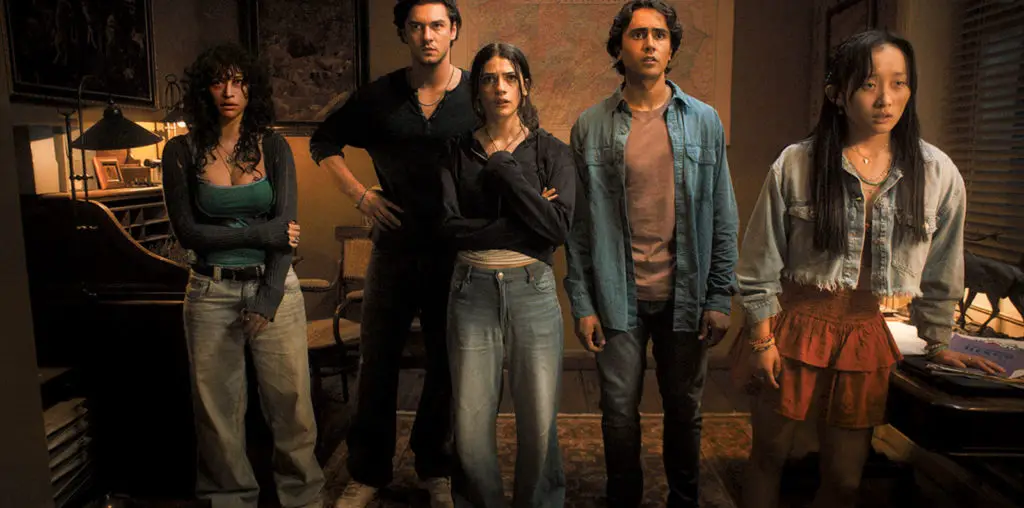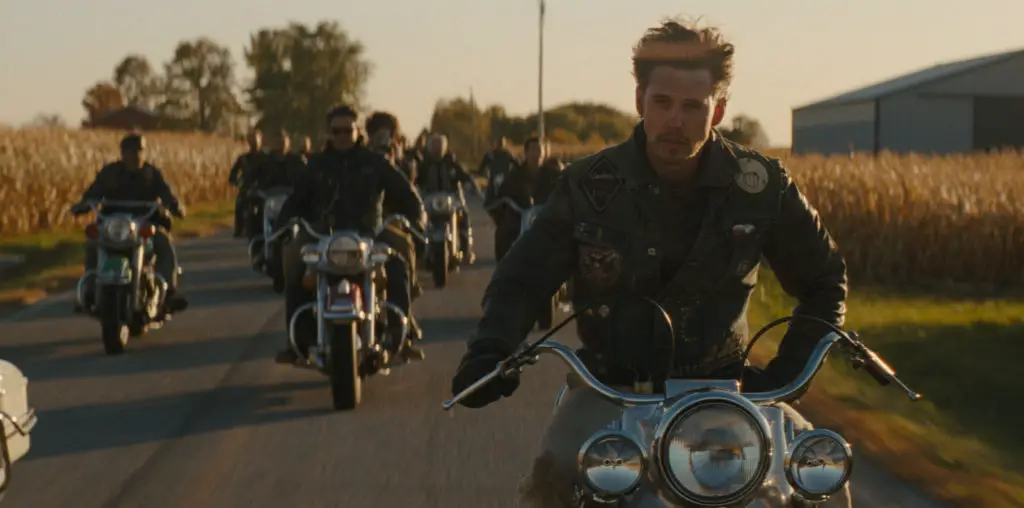
BOOTLEG FILES 134: “White Dog” (1982 Samuel Fuller thriller).
LAST SEEN: At the California Film Institute in July 2005.
AMERICAN HOME VIDEO: None.
REASON FOR DISAPPEARANCE: It just never happened.
CHANCES OF SEEING A DVD RELEASE: Maybe some day.
I’ve long hesitated including Samuel Fuller’s “White Dog” in this column because I am not a fan of Fuller’s work and I felt it would be unfair to provide commentary on the movie of a filmmaker I did not respect. However, it would be a glaring omission if a film like “White Dog” was absent from this column, since it is among the most prominent bootleg titles in circulation.
That being said, I am offering my two cents on “White Dog” with the warning that I am approaching the subject with bias. Honestly, I could never understand the cult surrounding Fuller – his films struck me as hyperventilating B-movies helmed by someone with more imagination than talent.
“White Dog” was not a Fuller-initiated project (the filmmaker was only back in Hollywood in 1980 after a six year absence from filmmaking). It began years earlier as a story by Romain Gary (a French filmmaker who, oddly, never sought to make it into a movie) and the project was passed around before Paramount tapped Fuller to take on the project. Fuller and Curtis Hanson collaborated on the screenplay; I am not certain how faithful the screenplay is to the Gary text, but I suspect there were significant changes.
“White Dog” is about a young actress named Julie (Kristy McNichol) who hits a stray white dog while driving one rainy night. She takes the dog to an emergency veterinary hospital, then takes it back to her spacious apartment (a bit of a grand residence for a would-be starlet). Once home, she nurses the dog back to health. No one responds to her advertisement seeking the dog’s owner, so she decides to keep it.
This proves to be a fortuitous decision, as Julie soon finds herself being attacked one night in her bedroom by a lascivious intruder. After a minute’s worth of loud struggling (complete with screams and sounds of broken furniture), the white dog wakes up from what must have been the world’s deepest sleep and decides to chew up the intruder. The man tries to escape, but the dog pursues him by jumping through a window (in slow motion, no less) and capturing him by gnawing at his wrist. Julie calls the cops, the miscreant is taken away, and the ivory Lassie is the new hero.
Until, of course, the doggie runs away when he spots a rabbit hopping around Julie’s backyard. The dog pursues the rabbit until he spots a more intriguing prey: a cigar smoking African-American garbage collector driving his dump truck around town. The dog goes bonkers and jumps into the cab of the truck, tearing at the understandably perturbed driver. The dog later returns to Julie all covered in blood, but she laughs it off (dogs will be dogs, after all) and washes her prodigal pooch in the shower stall.
Julie then gets a job in a cheesy movie and she takes the dog to the set. I’m not certain which studio allows dogs on sound stages, but this convenient liberality enables Julie to see that Mr. Mutt has a problem with people of color. While Julie is shooting a scene with a black actress, the dog inexplicably goes nuts and attacks the unsuspecting black woman.
Now clearly something is wrong here. While the attacked woman doesn’t bother to sue Julie and the LAPD Animal Control doesn’t have the dog taken away, Julie decides to see just what is making Fido tick. She consults an old, fat animal trainer (Burl Ives) and he concludes this dog was programmed to attack black people. His advice: have the dog destroyed. Julie then goes to another animal trainer, this time one who is younger, thinner and black (Paul Winfield). He decides to take the dog and try to un-train its racist tendencies.
In theory, this could have been a powerful indictment of racism and intolerance. On screen, though, the film is one of the dumbest things ever made. Much of the failure in “White Dog” can be traced to the terrible filmmaking, particularly the less-than-realistic dog attacks. It is painfully obvious that the gorier attacks scenes are not being done with real dogs, and even the dog’s snarling fangs are blatantly bogus. This artifice ruins what should’ve been the core of the film – rather than inspire fear, it inspires cheap laughs.
Even less realistic is Kristy McNichol. The one-time teen star of the now-forgotten 1970s TV series “Family,” McNichol was at an awkward part in her career where she was simultaneously reaching for both adult roles and movie stardom. The grown-up parts were there, but the films she chose to appear in (“The Night the Lights Went Out in Georgia,” “Only When I Laugh,” and this one) only served to magnify her painfully inadequate acting skills. Throughout “White Dog,” she goes through the action with the same bland, mildly annoyed _expression – whether the dog is chewing up someone or whether she just failed to get that juicy role or whether her hunky boyfriend (Parker Jameson) is being a prick, she never deviates from her monotone demeanor.
Despite this lethal one-two punch, “White Dog” took on a legendary life of its own thanks in large part to Fuller’s insistence that the NAACP was responsible for killing the movie’s release. As Fuller recounted in his autobiography, a representative from the civil rights group attempted to visit the set while the film was in production. Fuller had the man expelled, refusing to allow any part of the film to be seen before it was completed. After this incident, rumors allegedly but quickly spread that “White Dog” was a racist movie. When it was finished, the Paramount chieftains (Michael Eisner and Jeffrey Katzenberg – yes, those guys) became jittery that “White Dog” would be viewed as nasty to black people. Thus, the film was shelved.
A more likely explanation was having Eisner and Katzenberg watching the finished film, realizing it stank, and putting it on a shelf. It is no aberration in Hollywood for films to be shelved (at one point Miramax supposedly had more films on its shelf than in release). Even big name directors got the shelf treatment, most notably John Huston with his 1980 thriller “Phobia.” Furthermore, Paramount had no problems releasing “White Dog” in Europe and later running it on HBO. This would suggest the studio felt its U.S. theatrical commercial value was limited, not that its subject was too harsh for audience viewing.
Still, the failure to release “White Dog” set tongues and tails wagging. There was supposedly a Paramount executive who became so annoyed by the buzz surrounding the film’s withdrawal that he put up a sign that read: Don’t ask me about “White Dog”!
“White Dog” killed Fuller’s Hollywood career. He left for Europe and worked there for the rest of his career. To date, the film has never been commercially available on home video. Why the film remains out of print is not clear. Bootlegs are very easy to find (mostly from the HBO broadcast) and the film turns up frequently in Fuller retrospectives.
But as far as I am concerned, Bill Clinton’s favorite Arkansas aphorism best sums up Fuller’s movie: this dog don’t hunt.
____________________________________________________________
IMPORTANT NOTICE: The unauthorized duplication and distribution of copyright-protected material is not widely appreciated by the entertainment industry, and on occasion law enforcement personnel help boost their arrest quotas by collaring cheery cinephiles engaged in such activities. So if you are going to copy and sell bootleg videos, a word to the wise: don’t get caught. The purchase and ownership of bootleg videos, however, is perfectly legal and we think that’s just peachy! This column was brought to you by Phil Hall, a contributing editor at Film Threat and the man who knows where to get the good stuff…on video, that is.
Discuss The Bootleg Files in Back Talk>>>


